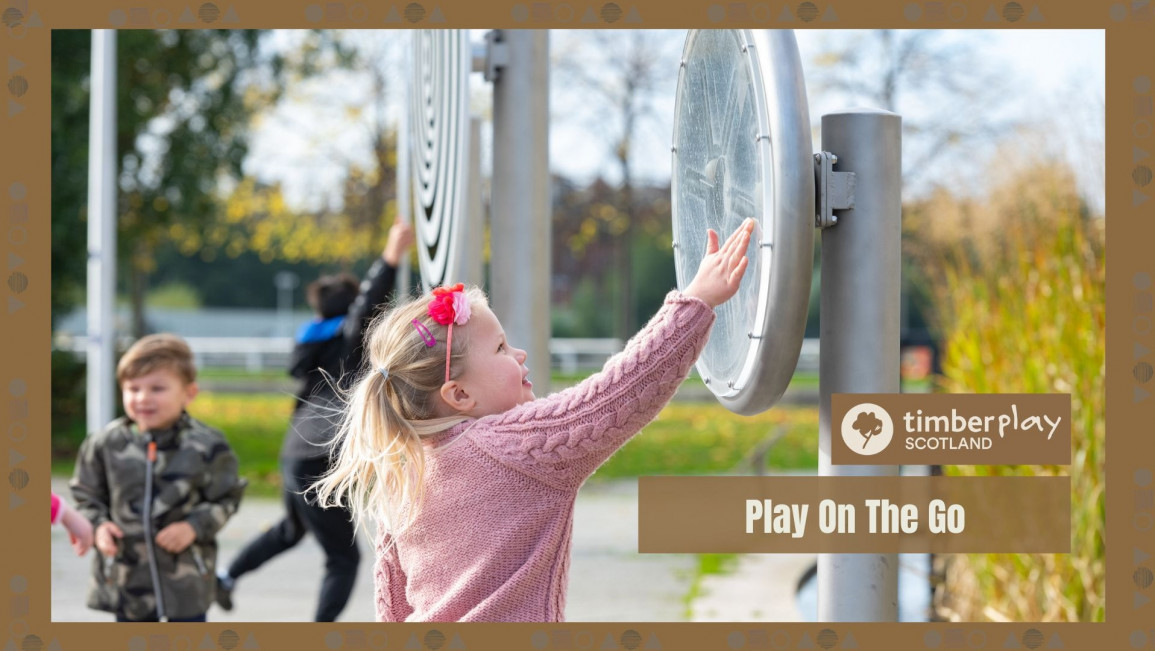Ideas and Insights
Imagine a city where every step a child takes opens up new realms of exploration, sparking curiosity and joy in unexpected places. In the heart of Glasgow, Timberplay's sensory installations at the Glasgow Science Centre are doing just that, transforming the landscape into an interactive journey of discovery. With outdoor illusions, sound equipment like the enchanting Dance Chimes, and installations that invite scientific exploration, these playful elements encourage children to see the world as their playground.
Expanding Play Beyond the Playground
Traditionally, playgrounds have been confined to fenced-off areas—designed, of course, for safety but unintentionally limiting children’s natural urge to explore their environment. The vision behind “play on the go”, also referred to as "on the way play" is to break down those barriers, integrating play into the fabric of everyday life. By placing equipment in accessible, open spaces, children experience the freedom to engage in play as part of their day-to-day surroundings, whether walking to school, visiting a science centre, or exploring a local park.
For cities, especially walkable ones like Glasgow, this is an exciting opportunity. Inspired by the emerging “15-minute city” concept, the idea of having everything a person needs within a short walk from home, this approach to play encourages urban designers and councils to see play spaces as integral to public infrastructure. This way, play becomes an everyday experience rather than a destination.
The Glasgow Science Centre: Science Meets Play
Timberplay’s sensory equipment at Glasgow Science Centre exemplifies this integration. Situated right in the city, this space encourages children to explore scientific principles through hands-on play. The Dance Chimes, for instance, invite children to stomp, dance, and experiment with sound, turning play into an exploration of cause and effect. Other sensory installations use illusions and tactile interactions, sparking curiosity and helping children understand complex ideas like sound waves, balance, and movement in a fun, accessible way.
These installations highlight a key principle in Scotland's approach to play: providing high play value. Play value refers to the richness of a play experience, from stimulating physical activity to fostering emotional and social skills. In Glasgow’s case, every piece of equipment is thoughtfully designed to offer more than just a fleeting amusement; each element draws children into a deeper level of interaction, sparking learning and imagination.
Dance Chimes at Glasgow Science Centre
Scotland’s Play Strategy: A Commitment to Play Value
Scotland has long been a pioneer in recognising the importance of play in children's development. The Scottish Government’s Play Strategy for Scotland underlines the need to provide meaningful play experiences that stimulate all areas of a child’s development. There is a strong focus on play value, particularly in public spaces, where children of all ages, backgrounds, and abilities should feel included and engaged.
The Glasgow Science Centre is a strong example of this commitment. Not only does it offer high play value, but it also considers the needs of children from diverse backgrounds, with installations designed to be inclusive and accessible. By making sensory experiences available to all, the centre provides a play experience that’s as rich in learning as it is in enjoyment.
Whirlpool Column at Glasgow Science Centre
Designing Cities for Play
For landscape architects, developers, and local councils, embracing a play-on-the-go approach can transform urban spaces into vibrant places of connection and exploration. Integrating play equipment into parks, streetscapes, and community hubs not only makes play more accessible but also enhances the sense of community. Parents and children alike can enjoy playful encounters on their daily walks, strengthening the bonds between people and the places they inhabit.
This idea is gaining traction beyond Scotland as well. Recent pilot projects like the one in Stockport, Edgeley, for example, are exploring similar concepts, reimagining urban spaces as play-friendly environments. These projects showcase the wider movement towards integrating play into walkable city designs, creating cities where play becomes a part of every day life.
The Future of Play in Scotland
Looking ahead, Scotland has an opportunity to lead the way in making play a natural part of everyday life. By embedding play into public spaces, we can create environments that foster curiosity, learning, and joy in children—and invite adults to join in the fun as well. With priorities shifting towards high play value, accessibility, and integrated play spaces, Scotland’s cities could well become examples for the world in how to make play an organic part of urban life.
As Timberplay continues to work with councils and developers across Scotland, our hope is to see a future where play is no longer limited to playgrounds but woven into and throughout our cities. By designing spaces that children can explore freely and engagingly, we’re not only fostering healthier, happier communities but also nurturing the next generation’s love for discovery.
In a world where “play on the go” becomes the norm, every corner, street, and pathway can inspire wonder, turning Scotland’s cities into vast playgrounds filled with potential. Let’s champion this vision and build cities where play is all around us, making the world a place where children—and adults—can enjoy endless exploration every day.


